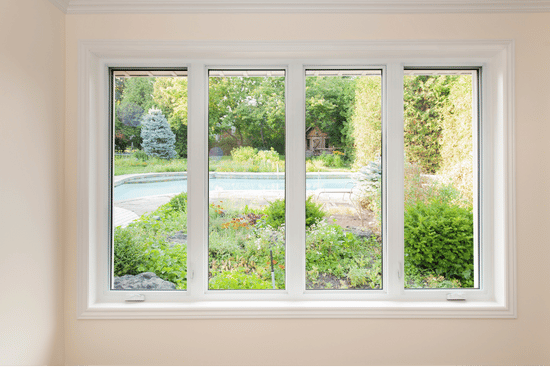
Properties and Overview of PVC (Polyvinyl Chloride)
Overview:
 PVC (Polyvinyl Chloride) is one of the world's most widely used thermoplastic polymers, known for its durability, versatility, and affordability. Its ability to be formulated into rigid and flexible forms makes PVC a staple material in construction, healthcare, automotive, and consumer goods. PVC's chemical resistance, ease of processing, and long service life enhance its appeal for diverse applications.
PVC (Polyvinyl Chloride) is one of the world's most widely used thermoplastic polymers, known for its durability, versatility, and affordability. Its ability to be formulated into rigid and flexible forms makes PVC a staple material in construction, healthcare, automotive, and consumer goods. PVC's chemical resistance, ease of processing, and long service life enhance its appeal for diverse applications.
Production:
The production of PVC involves the polymerization of vinyl chloride monomers (VCM) through processes such as suspension, emulsion, or bulk polymerization. The resulting polymer is a white, brittle solid that can be modified with plasticizers, stabilizers, fillers, and other additives to tailor its properties for specific uses. Rigid PVC, often called uPVC (unplasticized PVC), is used for durable and structural applications, while flexible PVC, made by adding plasticizers, is used for softer, more pliable products. PVC is processed through techniques such as extrusion, injection molding, and calendaring, allowing for creating a wide variety of products.
Applications:
PVC's applications are extensive due to its adaptability and cost-effectiveness. In the construction industry, rigid PVC is used for pipes, fittings, window frames, and roofing materials, where its durability and weather resistance ensure long-lasting performance. In healthcare, flexible PVC is employed for medical tubing, blood bags, and IV containers, benefiting from its flexibility, transparency, and biocompatibility. The automotive industry uses PVC for interior trims, cable insulation, and underbody coatings, where its resistance to wear and chemicals is critical. PVC is found in consumer goods flooring, packaging, and synthetic leather products, demonstrating its versatility across everyday applications. Additionally, PVC is used in electrical insulation, signage, and protective coatings due to its excellent dielectric properties and moisture and UV exposure resistance.
Summary:
Polyvinyl Chloride is a highly versatile and widely used polymer with a unique combination of durability, affordability, and adaptability. Its ability to meet the needs of a broad range of industries ensures its continued importance in modern manufacturing and construction. As innovation drives improvements in PVC formulations and recycling technologies, the material remains a critical solution for addressing industrial challenges while supporting sustainability. Its widespread applications and long-standing reliability solidify PVC's role as a cornerstone polymer in global production and infrastructure.
See a comprehensive list of electrical, mechanical, physical and thermal properties for PVC (Polyvinyl Chloride) below:
Electrical Properties of PVC (Polyvinyl Chloride)
Unfamiliar with a property? Click it's description to be given a full definition in the GLOSSARY
See properties and overview for
ALLOYS and CHEMICAL ELEMENTS
popular in engineering
Require different units not displayed?
CONVERT VARIOUS UNITS HERE
Mechanical Properties of PVC (Polyvinyl Chloride)
Unfamiliar with a property? Click it's description to be given a full definition in the GLOSSARY
See properties and overview for
ALLOYS and CHEMICAL ELEMENTS
popular in engineering
Require different units not displayed?
CONVERT VARIOUS UNITS HERE
Physical Properties of PVC (Polyvinyl Chloride)
| Physical Property (Units) | Value |
|---|---|
| PVC (Polyvinyl Chloride) Boiling Point at Atmospheric Pressure (°C) | Decomposes |
| PVC (Polyvinyl Chloride) Chemical Composition (Element %) | (C2H3Cl)n |
| PVC (Polyvinyl Chloride) Cost ($/kg) | 1 to 3 |
| PVC (Polyvinyl Chloride) Density at 'Standard Temperature and Pressure' (kg/m3) | 1300 to 1580 |
| PVC (Polyvinyl Chloride) Glass Transition Temperature at Atmospheric Pressure (°C) | 60 to 80 |
| PVC (Polyvinyl Chloride) Melting Point at Atmospheric Pressure (°C) | 160 to 210 |
| PVC (Polyvinyl Chloride) Polymer Family | Thermoplastic |
| PVC (Polyvinyl Chloride) Refractive Index | 1.54 to 1.55 |
| PVC (Polyvinyl Chloride) Specific Gravity | 1.30 to 1.58 |
| PVC (Polyvinyl Chloride) Viscosity at Melting Point (mPa·s) | Unknown |
Unfamiliar with a property? Click it's description to be given a full definition in the GLOSSARY
See properties and overview for
ALLOYS and CHEMICAL ELEMENTS
popular in engineering
Require different units not displayed?
CONVERT VARIOUS UNITS HERE
Thermal Properties of PVC (Polyvinyl Chloride)
| Thermal Property (Units) | Value |
|---|---|
| PVC (Polyvinyl Chloride) Coefficient of Thermal Expansion (µm/m·K) | 50 to 100 |
| PVC (Polyvinyl Chloride) Emissivity Coefficient | ~0.9 |
| PVC (Polyvinyl Chloride) Specific Heat Capacity (J/kg·K) | 800 to 1000 |
| PVC (Polyvinyl Chloride) Thermal Conductivity (W/m.K) | 0.18 |
| PVC (Polyvinyl Chloride) Thermal Conductivity (BTU/h·ft·°F) | 0.10 |
Unfamiliar with a property? Click it's description to be given a full definition in the GLOSSARY
See properties and overview for
ALLOYS and CHEMICAL ELEMENTS
popular in engineering
Require different units not displayed?
CONVERT VARIOUS UNITS HERE
 ADDED TO MY FAVORITES!
ADDED TO MY FAVORITES! REMOVED FROM MY FAVORITES!
REMOVED FROM MY FAVORITES!